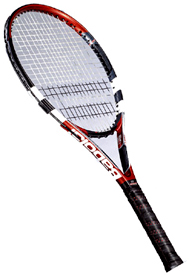Nanotechnology is all about making materials that take advantage of their unique properties at the nanometer scale. So what’s up with that? Carbon nanotubes are tiny tubes of just carbon that are about two nanometers wide. But carbon nanotubes are fifty-times stronger than steel. That is because all of the carbon atoms are bound to one another without any breaks. Most stuff breaks because of defects. If you take a wafer (silicon? Nah a vanilla one) it will break along a line of defects in the structure of the cookie. Most times you can’t see them but if you use a powerful electron microscope then you can see these little tiny defects. If the defects are all lined up, then that is a problem because they can then form a break when you apply a stress. Carbon nanotubes free of defects are really strong. Right now scientists don’t know how to make really long carbon nanotubes or how to best glue a lot of them together.
You can do all sorts of useful things with carbon nanotubes. They are strong and they are also light. Some kinds of sports equipment work better when they are strong and light. Light meaning that you can swing them really hard, it takes less energy to move them. Strong so that they don’t break or even bend too much. The tennis racket company Babolat is teaming up with another company, Nanoledge, that makes carbon nanofibers and other nanometer scale materials to make cool tennis rackets. Back a long time ago tennis rackets were made of wood and so they were heavy and slow. Now using carbon nanotubes tennis rackets, golf clubs and other sports equipment can be made better. 
The real challenge is putting things like carbon nanotubes into the materials in a way that they help make the equipment stronger and lighter. Scientists are studying these composites and different ways of bonding the nanometer scale materials into them. You can’t make stuff completely out of carbon nanotubes because we can’t make carbon nanotubes too long (yet), and unless you want to make a nanometer sized golf club, you need other materials in the composite. But someday, scientists will figure this out and use carbon nanotubes to make something really cool, like an elevator to space.

